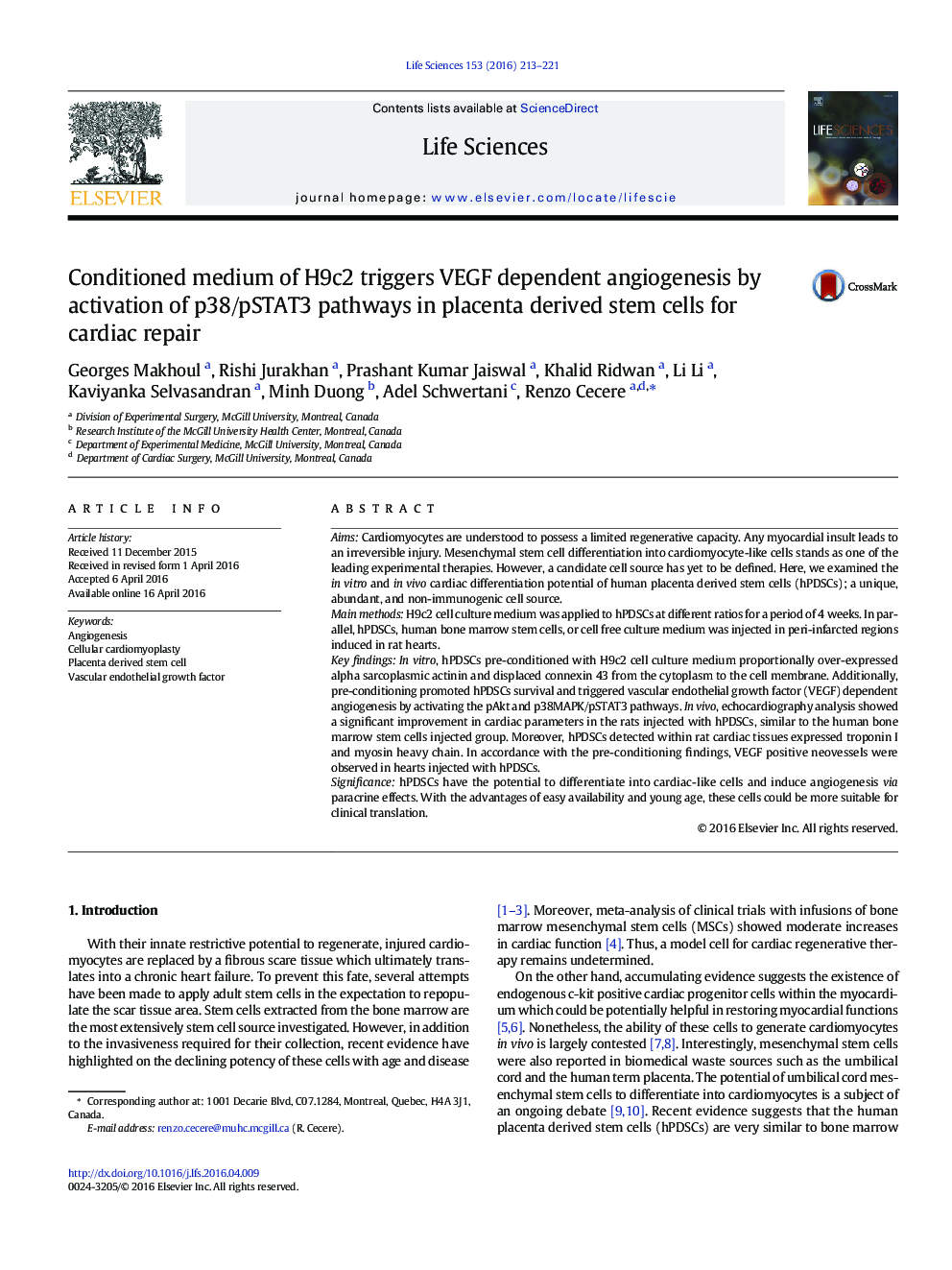| Article ID | Journal | Published Year | Pages | File Type |
|---|---|---|---|---|
| 2550570 | Life Sciences | 2016 | 9 Pages |
AimsCardiomyocytes are understood to possess a limited regenerative capacity. Any myocardial insult leads to an irreversible injury. Mesenchymal stem cell differentiation into cardiomyocyte-like cells stands as one of the leading experimental therapies. However, a candidate cell source has yet to be defined. Here, we examined the in vitro and in vivo cardiac differentiation potential of human placenta derived stem cells (hPDSCs); a unique, abundant, and non-immunogenic cell source.Main methodsH9c2 cell culture medium was applied to hPDSCs at different ratios for a period of 4 weeks. In parallel, hPDSCs, human bone marrow stem cells, or cell free culture medium was injected in peri-infarcted regions induced in rat hearts.Key findingsIn vitro, hPDSCs pre-conditioned with H9c2 cell culture medium proportionally over-expressed alpha sarcoplasmic actinin and displaced connexin 43 from the cytoplasm to the cell membrane. Additionally, pre-conditioning promoted hPDSCs survival and triggered vascular endothelial growth factor (VEGF) dependent angiogenesis by activating the pAkt and p38MAPK/pSTAT3 pathways. In vivo, echocardiography analysis showed a significant improvement in cardiac parameters in the rats injected with hPDSCs, similar to the human bone marrow stem cells injected group. Moreover, hPDSCs detected within rat cardiac tissues expressed troponin I and myosin heavy chain. In accordance with the pre-conditioning findings, VEGF positive neovessels were observed in hearts injected with hPDSCs.SignificancehPDSCs have the potential to differentiate into cardiac-like cells and induce angiogenesis via paracrine effects. With the advantages of easy availability and young age, these cells could be more suitable for clinical translation.
